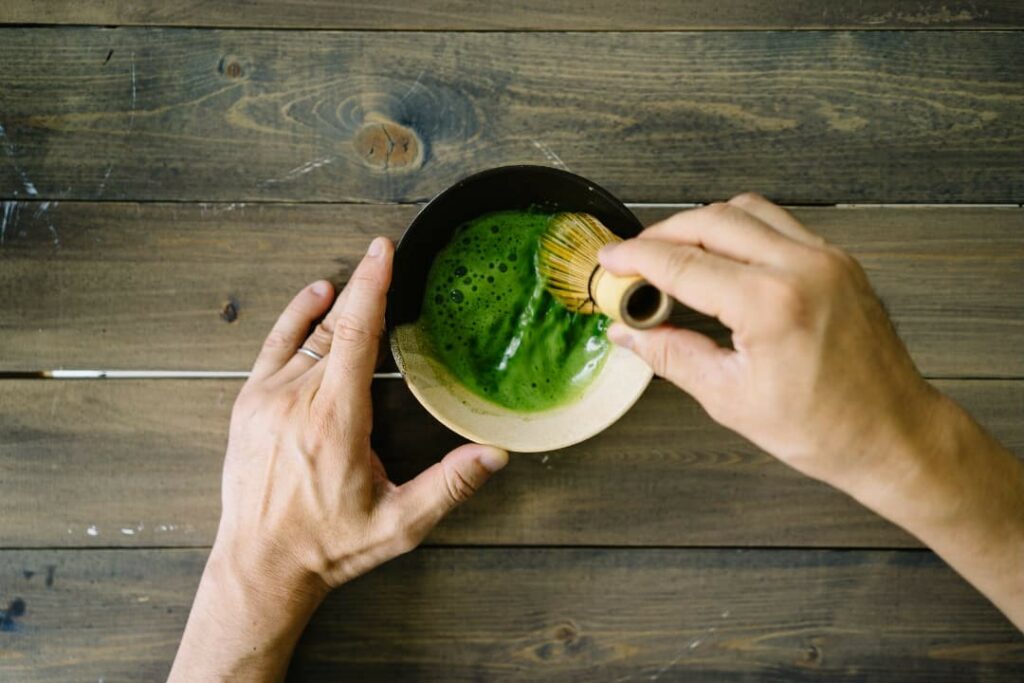Nature’s Boosters: Exploring the Unique Benefits of Kratom vs. Matcha
In recent years, kratom has entered the conversation in a big way. People are intrigued by its implications for wellness and energy boosting.
In the realm of natural botanical substances, kratom and matcha emerge as two powerful contenders, each boasting a unique set of benefits that enhance the lifestyle and vitality of those who use them. With kratom hailing from Southeast Asia and matcha from Japan, we like to think of them as distant cousins.
Despite their different backstories, a lot of people are inquiring…can you mix kratom and matcha for a supercharged blend of goodness? Spoiler: it’s a journey worth taking.
So, let’s get into the nitty-gritty of what makes kratom and matcha unique and why your life might just be a bit greener with them in it.
Kratom: Southeast Asia’s Energizing Secret
Kratom, or Mitragyna speciosa, thrives in the lush landscapes of Southeast Asia where it has been revered for centuries for its dual capacity to invigorate and soothe.
Kratom has exploded in popularity because people are discovering it’s like nature’s energy bar. This leaf is all about the uplift and chill, thanks to its magical alkaloids, especially mitragynine, which are a bit like nature’s way of tapping into our body’s vibe controls for a mood boost and that much-needed energy kick.
Whether it’s powders, capsules, or gummies, kratom is making waves as the new go-to for clean, wellness-based energy.
Matcha: The Zen of Green Tea
Then there’s matcha, the green powerhouse that’s more than just a trendy latte ingredient.
Also referred to as ceremonial green tea, matcha is made from the same leaves as typical green tea. With caffeine and L-theanine teaming up, matcha serves up a calm yet alert state of mind, without the jitterbug dance you get from coffee, making it the ultimate pick for those in search of zen-like focus and a gentle nudge to their metabolism.
Here’s a cool fact: matcha bushes are shaded before harvest, making the leaves a bright green. That vibrant color isn’t just for show – matcha is packed with chlorophyll and antioxidants, especially epigallocatechin gallate (EGCG), which is basically the superhero of the antioxidant world.
Once harvested, the leaves are steamed, stripped of stems and veins, and ground into the finest powder that makes its way into your energizing cup.
A Comparative Glimpse
| Aspect | Kratom | Matcha |
| Origin | Southeast Asia | Japan |
| Benefits | Those who take kratom have found it helps mood enhancement and energy levels | Matcha lovers appreciate the antioxidant-rich, sustained energy, and mental clarity benefits |
| Serving Sizes | Typically, 2-8 grams, depending on the desired effect | 1-2 teaspoons mixed in hot water |
| Best For | Users report effects ranging from energy and focus to relaxation and physical comfort, depending on the serving size | Daily wellness, focus, antioxidant support |
| Appearance | Both grow in the wild, but are mostly grown on farms now. Kratom grows on a tree with thick, broad leaves. | Matcha grows on small shrubs. Matcha powder is usually ground much finer than kratom and has a brighter green appearance. |
| Active Ingredients | Over forty alkaloids, the main two being mitragynine and 7-hydroxymitragynine. | Amino acids theophylline and L-theanine provide long-lasting energy boosts; its health benefits come mainly from EGCG, a potent catechin that acts as an antioxidant. |

Mixing Kratom & Matcha: The Ultimate Energy Cocktail?
Ever thought about mixing kratom and matcha? Yeah, it’s a thing, and it’s kind of like creating your own personal energy cocktail – minus the hangover.
People are buzzing about this combo, and it’s not hard to see why. Imagine getting the mood lift from kratom with the clear-headed energy from matcha. Sounds like a match made in heaven, right?
Here’s the lowdown: matcha and kratom are both a bit on the bitter side, so don’t expect any flavor miracles here. But if it’s a kick you’re after, you may be onto something. Think of it as mixing the chill vibes of kratom with the focused energy of matcha. It’s the kind of mix that can make your social game strong, pump up your motivation, and enhance your mood.
Now, go in with your eyes open, because these two pack a punch, especially if your caffeine tolerance is more ‘novice’ than ‘ninja’. And if you’re mixing caffeinated matcha with the get-up-and-go of white kratom, well, let’s just say you might end up with more energy than you bargained for.
The trick? Start small. This isn’t a race, and finding the perfect balance for your body can take a bit of experimenting. Just remember: it’s all about finding what works for you. Maybe that means a little less kratom, a touch more matcha, or vice versa.

Final Thoughts
As the buzz around clean-label products continues to grow, it’s clear that people are all about trustworthiness and transparency in what they consume. They’re seeking out products with natural ingredients and responsible sourcing, pointing towards a future where powdered forms, including kratom and matcha, are not just preferred but sought after for their convenience, ease of storage, and versatility in enhancing flavors with natural sweeteners and beverages.
So, are kratom and matcha the dream team waiting to supercharge your day? They just might be. As we navigate a world where clean and convenience are king, diving into the green goodness of kratom and matcha, and maybe even blending the two, seems like a natural next step.
Just go easy, mix smart, and who knows? You might just find your new favorite blend.
For Further Reading
If you want to learn more about where kratom and matcha overlap in their unique properties and benefits, check out these valuable resources.
- Cinosi, Eduardo, et al. “Following the Roots of Kratom.” NIH.gov. 10 November 2015
- Karunakara, Thiruventhan, et al. “The Chemical and Pharmacological Properties of Mitragynine and Its Diastereomers: An Insight Review.” NIH.gov.
- Paul, Wade. “Matcha vs. Kratom: Similarities, Safety, Dosage & More.” Kratom.org. 2023




